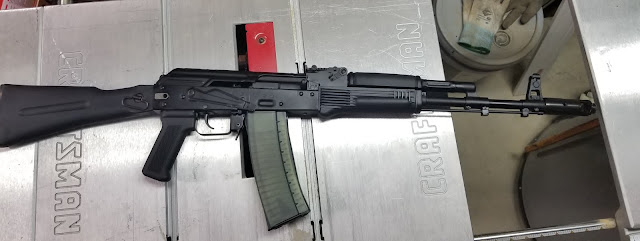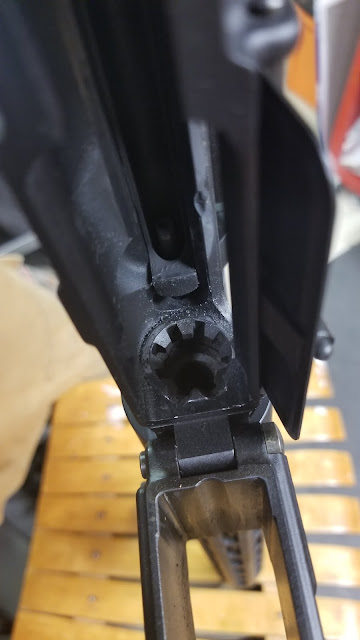The AK-100 Series
 |
| An Arsenal SLR-106, the closest thing to an AK-101 readily available in the US |
Introduction:
The AK-100 series of rifles has its roots in the AK-74M, Russia's modernized variant of the AK-74 platform. The AK-100 series has many variants in some of the most popular calibers, such as 7.62x39mm, 5.45x39mm, and interestingly, 5.56x45mm NATO. The AK-100 series is primarily intended for export and use by domestic police and special forces in Russia. In addition to Kalashnikov's typical offerings of 7.62x39mm and 5.45x39mm, the inclusion of 5.56 creates an interesting crossover between East and West. This creates a rifle that could be attractive to countries with large amounts of 5.56 NATO ammunition that also want the reliability and simplicity of the AK platform.
Technical Details:
Because of the AK-100 series' technical similarities to the AK-74M, I'm going to touch on the common features seen on both rifles variants. First off, being the modernized take on the AK-74, the rifles feature black polymer furniture, unlike the wood or laminate from older versions. The polymer handguards also contain a metal heat shield to help protect the shooters' hand from heat after extended periods of firing.
Both the AK-74M and AK-100 series rifles also feature a side-folding stock. The Russians evidently decided to move away from metal triangle or wirefram folding stocks in favor of a polymer stock with metal reinforcing at points. Both the AK-74M and the AK-100 series of rifles also utilize a muzzle brake that has proved to be very effective in reducing muzzle rise. The brake was originally on the AK-74 in 5.45x39mm, but has been adapted to be used on the AK-103 in 7.62x39mm.
The AK-74 muzzle brake is famous for both its effectiveness, as well as its simplicity. In most ways, the AK-100 series, specifically the AK-101, is just a slightly resized copy of an AK-74M that is chambered for 5.56 NATO. The AK-100 series and AK-74M are seen as modern, capable fighting rifles, as they can be fitted with a variety of optics and accessories, depending on the goals of the user.
History and Use:
The AK-100 series, specifically the AK-101, was designed with the intent of exporting them. One of the countries that has taken Russia up on this, is Kenya. Kenya imported a batch of AK-101 rifles to distribute to Park Rangers in order to help fight wildlife poachers.
 |
| Source: https://www.pri.org/stories/2013-10-08/rangers-kenya-are-outgunned-new-poaching-arms-race |
In recent years, poachers have graduated from small guns and pistols on to full-on assault rifles, often outgunning the rangers trying to fight them off. As a response to this, Kenya's rangers sought to gear up in order to stop poachers from killing both valuable animals, and their fellow rangers.
Conclusion:
The AK-100 series of rifles is the latest series of Kalashnikov rifles that has seen fairly wide-spread use worldwide. There have been more recent innovations, such as the AK-12 and AK-15, but those are confined to very limited use by Russia. For the purposes of an AK enthusiast in the United States, Arsenal's SLR-106 series of rifles provides the closest thing you can easily get to an AK-101. The advantage of one of these over a typical AK is that the supply of 5.56 NATO ammunition is not nearly as vulnerable to import restrictions than 7.62x39 from Russia. This makes for a handy, effective fighting rifle.



Comments
Post a Comment